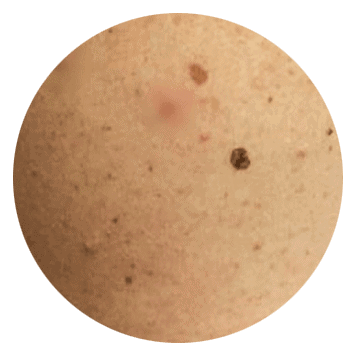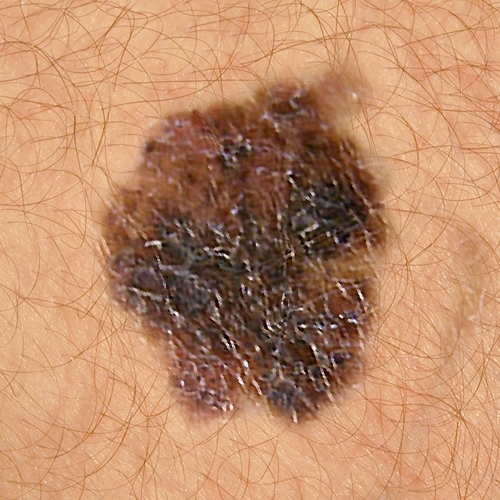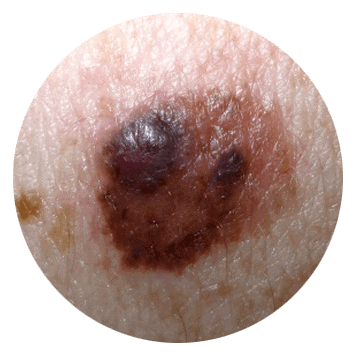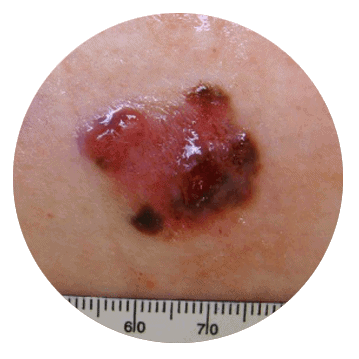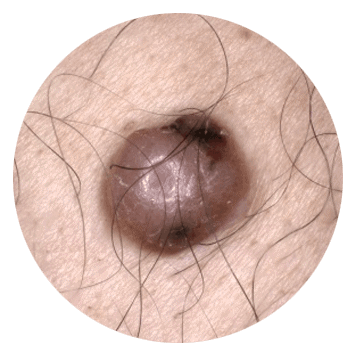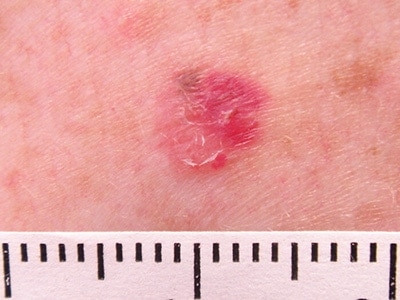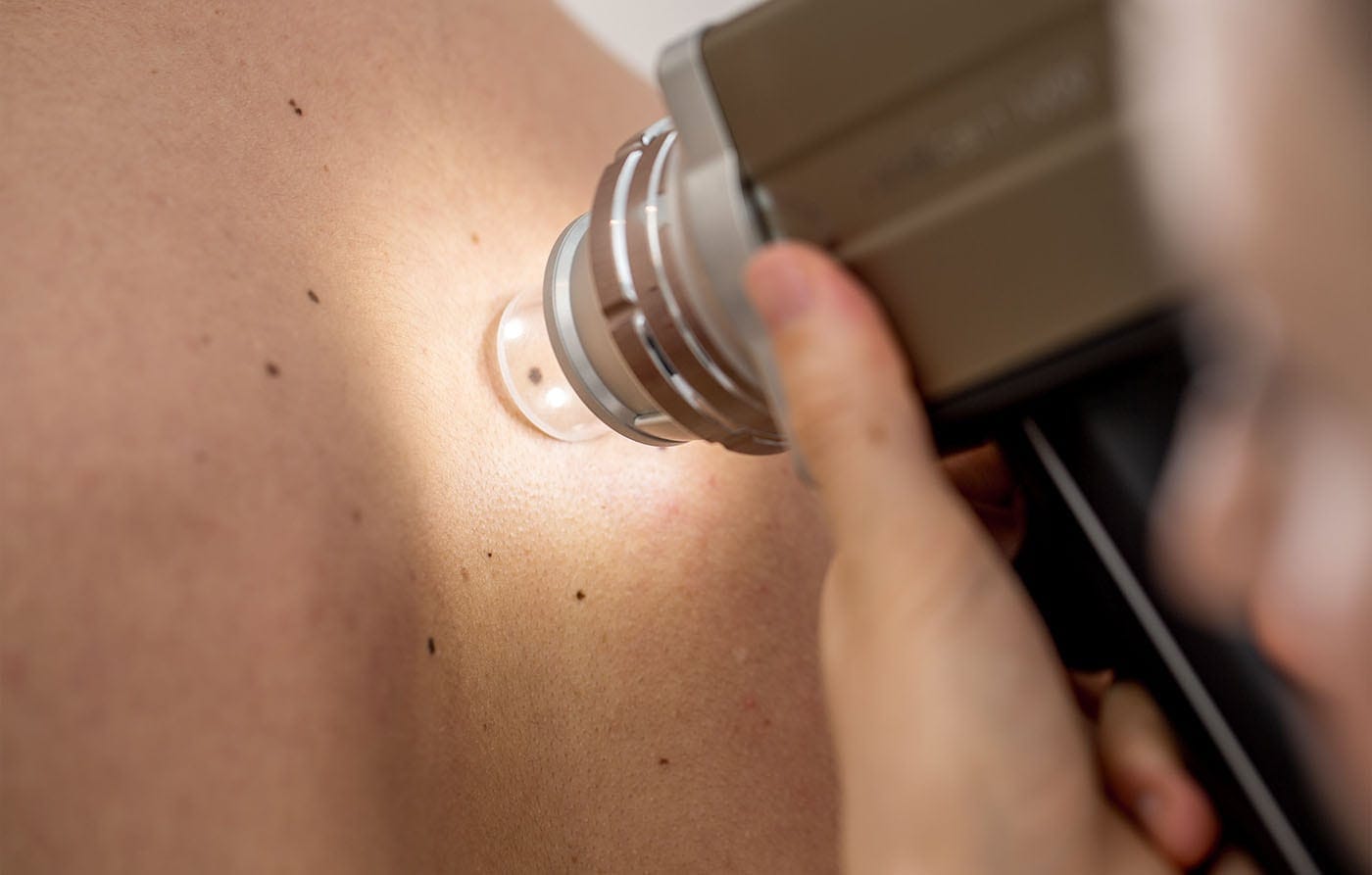Signs and Symptoms of Melanoma: What You Should Look For
Educate yourself on the signs and symptoms of melanoma you should be aware of.
Table of Content:
Signs of Melanoma | Early Signs of Melanoma | Ugly Duckling | ABCDE rule | Other signs of Melanoma | Can Melanoma Be Caught Early? | Can Early Melanoma Be Cured?
Our commitment to producing high-quality content:
The information presented in this article is based on scientific research and the professional advice of our Content Medical Reviewers, who are experts in the field of Dermatology. How we write our content →
Melanoma is a type of skin cancer that, if caught early, is often treatable. However, those who are diagnosed with later stage disease have lower survival rates.
Increasing knowledge among at-risk populations about melanoma symptoms and its signs is vital to catching this type of skin cancer early and improving survival rates.
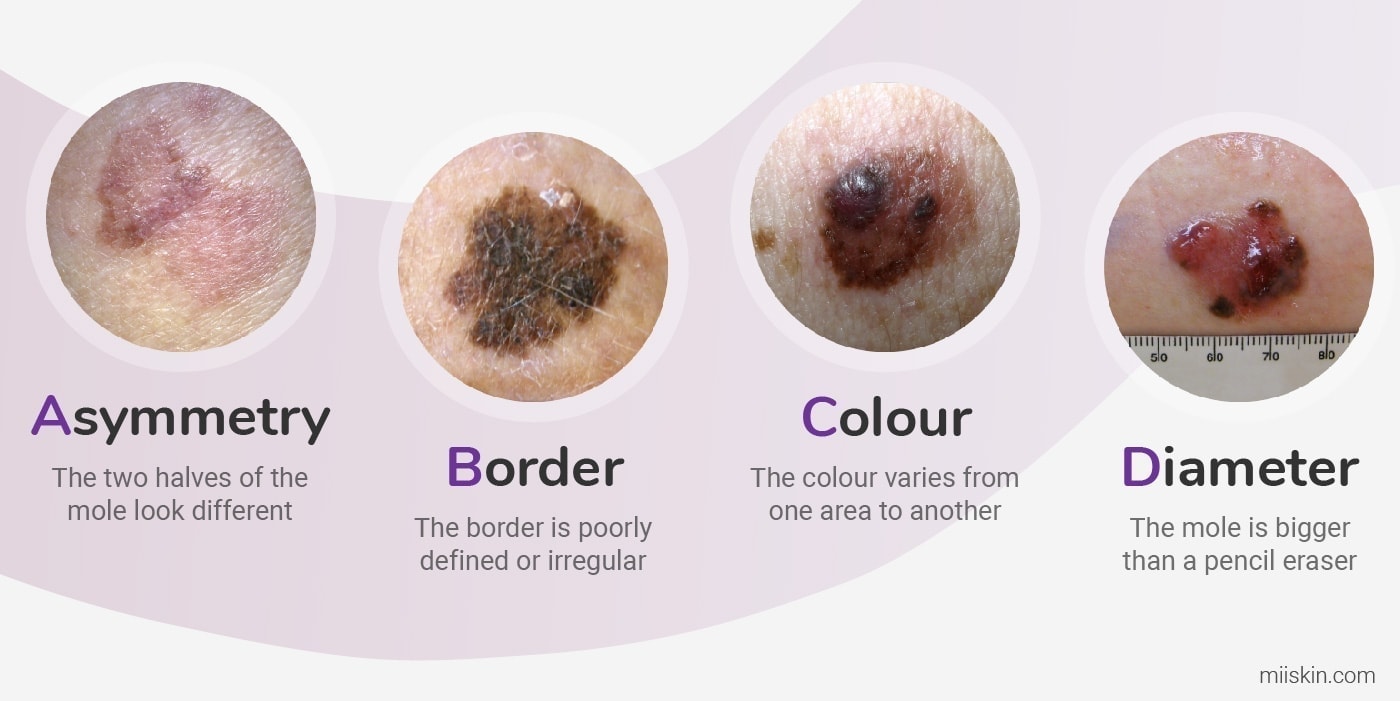
How to Spot Melanoma: Signs of Melanoma
When the signs of melanoma are commonly known and concerning lesions are discovered at an earlier stage, cure rates are much higher. Often only local removal of the lesion itself is required.
Later diagnosis often necessitates additional treatment such as immunotherapy or chemotherapy. These carry a higher risk of side effects.
Educating patients regarding melanoma warning signs is vital to increasing early detection of this skin cancer. Melanoma is, however, often not easily detected – especially not in the earliest and most treatable stages.
When looking for signs of melanoma, it is particularly vital to watch out for new skin lesions or changes in existing moles and marks.
That is why watching your skin for signs of melanoma should be done regularly, with emphasis on getting to know your skin, so that you are better equipped to notice changes at an early stage.
After going through the sections below on the signs of melanoma and how to spot melanoma, please read on to learn how you can get in the habit of looking for changes in your skin.
(Video walk-through of this article. No sound.)
What Are the Early Signs of Melanoma
There are different strategies to follow when determining whether a lesion may be a malignant melanoma.
- The Ugly Duckling sign
- The ABCDE signs
- Less common signs of melanoma
The Most Important and First Warning Sign of Melanoma Is the Ugly Duckling Sign
The Ugly Duckling sign is one of the most important signs of melanoma. It is based on the concept that a melanoma can look different from the other moles and marks on your skin.
The ugly duckling sign of melanoma is any suspicious spot that looks different from other surrounding moles or marks on your skin (it can be larger, smaller, darker, or lighter).
Remember, critically evaluating your own skin lesions can be difficult. If you are concerned about a mole, you should see your doctor. Patient history is invaluable and can raise an early warning flag. Your doctor will help decide if further action is needed.
The Abcde Rule of Looking for Early Signs of Melanoma:
The ABCDE Rule is used by physicians and patients for determining whether a lesion, mole or any other mark or growth on the skin may be suspicious for melanoma or even another type of skin cancer.
When you go through your full-body skin self-exam, use The ABCDE rule and look for lesions that present with one of the following melanoma signs.
Remember, just because a lesion has one of these signs DOES NOT make it a melanoma. These rules are useful in helping you to know what to report to your doctor when concerned about skin cancer.
Images supplied by DermNet NZ.
A – Asymmetry of a lesion:
If the two halves of the lesion do not match it can be said to be asymmetric. Keep in mind that most moles that have some degree of asymmetry are not cancerous.
B – Border irregularity:
The border is uneven in appearance and shows some irregularity – it may seem to be more rugged or notched in the edges.
C – Color changes or more than one colour:
Does the lesion present with different colours or shades of brown / black / red? Melanomas can also have areas that are white or blue.
A change in color of a lesion noticed by the patient may also be a potential melanoma sign.
D – Diameter of the lesion:
Lesions that are bigger than the size of a pencil eraser (approximately 5mm or ¼ inch) carry a higher risk of being melanoma. Keep in mind that many larger lesions are not melanoma, but small size alone also does not guarantee the lesion is not melanoma.
E – Evolution or Evolving:
One of the most important melanoma signs is a change or evolution of the skin. This may be in an existing mole or skin lesion or a new lesion evolving from previously normal skin. The appearance of a new lesion is particularly important in adults.
If a mole is starting to evolve or you notice some other changes, such as a lesion that increases in size or changes in colour, visit your doctor and have it evaluated.
It is important you are aware that melanoma can occur practically anywhere on the body, even on the base of the feet or soles, the nails, scalp, and in other areas not often exposed to UV light. Blonde hair, fair skin and being a man over 50 are some of the most important risk factors of melanoma. Important behavioral risk factors include regular sun exposure and the use of UV tanning beds.
MIISKIN PROMO
Tracking your moles for changes?
Miiskin helps you routinely take full-body photos and close-ups of moles to look for new or changing moles and marks.

Other Melanoma Signs to Look For
It is also important to be aware of less common early presentations of melanoma:
- Elevation – a spot becomes elevated from the skin
- Growth – in surrounding skin– skin around it starts to become red or swollen
- Chronicity – a new lesion does not go away again within a few weeks
One of the less common types of melanoma is amelanotic melanoma. The most common sign that may indicate the presence of amelanotic melanoma is the sudden appearance of a red, pink, or skin-colored spot.
Because of their lack of brown color, amelanotic melanomas can be hard to detect. Relying on the ABCDE rule may not be enough so it is recommended to expand it and use the 3Rs concept as well (Red, Raised, Recent change). Other rare signs include changes under the nail.
Melanoma symptoms, such as itchy scalp lesions, are often mistaken for other things, and if you have concerns, you must visit your doctor.
You can have a look at our melanoma picture gallery for images of melanoma and non-cancerous moles, and photo galleries of healthy benign moles and unusual-looking atypical moles.
Can Melanoma Be Caught Early?
YES. Early diagnosis and treatment of melanoma, requires recognition of its presenting signs and a biopsy by your doctor. The most important things to do in order to have the best chances of catching melanoma early are:
- Stay educated about early warning signs of melanoma
- Check your skin and moles for any suspicious changes
- Keeping track of marks on your skin using photos so you can compare them over time may be helpful
- Visit your doctor if you have any concerns
Early melanoma is more likely to be treated successfully. Raising awareness of the early signs of melanoma is therefore vital in the fight against skin cancer.
We should all regularly check our skin for any suspicious changes but people at increased risk should be particularly vigilant. They should have a lower threshold for seeking an assessment by a doctor. If you notice some of these signs of melanoma it is important to visit your doctor.
The infographic below provides a recap of the early melanoma signs, as well as highlights some melanoma symptoms to look out for.
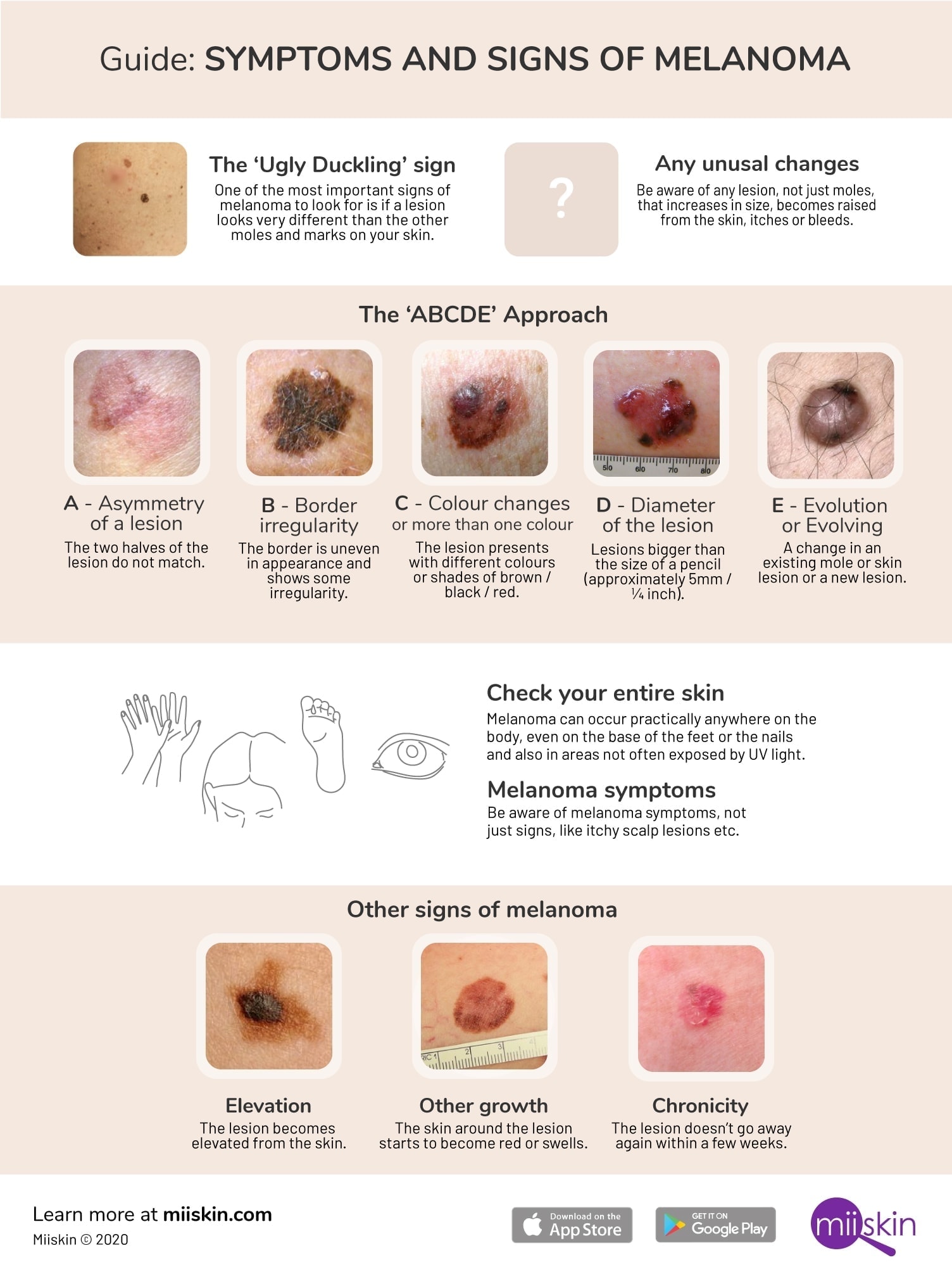
Can Early Melanoma Be Cured?
‘Melanoma in situ’ as it is referred to, has a five-year survival rate of 99-100% and therefore is said to be curable. This is the earliest stage of melanoma, in which there has been no local or distant spread of the cancer.
How to Recognize a Suspicious Change on Your Skin?
It can be difficult to evaluate whether a change on your skin is suspicious or not, but as a first step getting better at noticing if your skin changes or not is helpful. Then you can let your doctor decide if the change to your skin or in a mole is a concern.
Checking Your Skin for Changes
Checking your skin for any changes is something that should be done regularly. It is important when you examine your skin that you check your entire body from top to toe. Read this guide on How to do a skin self-exam.
You may want to take photos of your skin to look after new moles or marks and close-up photos of moles you want to keep a closer eye on. You can download an app to help you take, store and compare your photos over time.
Above all, it is important that any suspicious change on your skin should not be left unexamined by a doctor. It is always best to get an in-person doctor’s examination of your skin concern.
Consult a Board-Certified Dermatologist Now!

Download the Miiskin app to connect with independent, board-certified dermatologists who are licensed in your state. Answer a few questions, upload some photos and get a treatment plan in 1-2 days. Consultation price is $59 and medication renewals are only $39.
Online dermatology care is ideal for chronic dermatology conditions.


